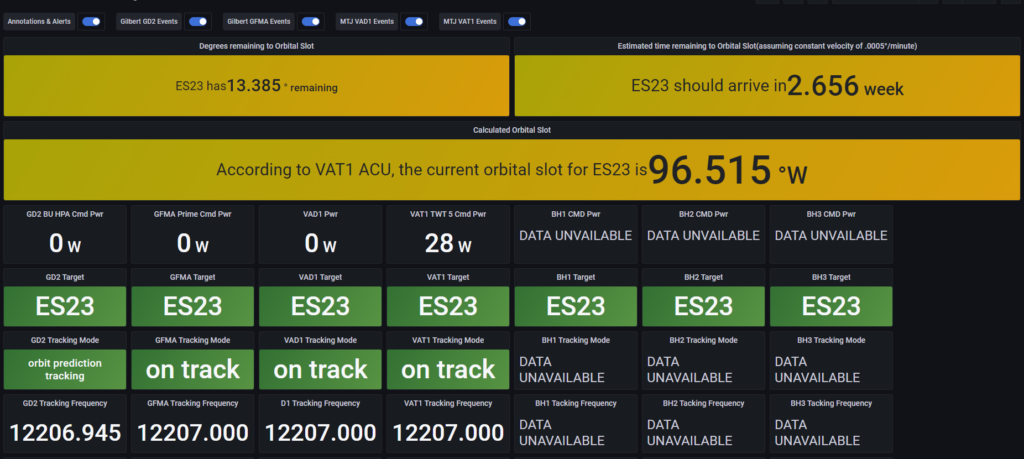Last updated on November 6th, 2023 at 05:05 am
Are you wondering how the “X-Frame-Options” comes into play in the world of uptime Kuma?
This article has got you covered!
Uptime Kuma is a powerful open-source monitoring tool that helps you keep track of your website’s uptime and performance.
One of the key features of Uptime Kuma is its support for X-Frame-Options, a security header that helps protect your website against clickjacking attacks.
In this article, we’ll look closer at Uptime Kuma’s X-Frame-Options support and how it can help you keep your website secure.
The Basics of Uptime Kuma
Uptime Kuma is an open-source monitoring tool that helps you keep track of your website’s uptime and performance.
It is similar to other monitoring tools like UptimeRobot and Statping.
Uptime Kuma supports multiple notification systems and can be used to monitor internal services.
Primary Functions of Uptime Kuma
1. Monitoring website uptime and performance.
2. Alerting users when a website goes down or experiences performance issues.
3. Providing detailed reports on website uptime and performance over time.
Importance of Website Uptime and Availability
Website uptime and availability are critical for businesses and organizations that rely on their websites to generate revenue, provide services, or communicate with customers.
Downtime can result in lost revenue, decreased customer satisfaction, and damage to a company’s reputation.
Therefore, web monitoring tools like Uptime Kuma play a crucial role in ensuring a seamless online presence.
They help website owners detect and resolve issues quickly, minimizing downtime and ensuring that websites are always available to users.
X-Frame-Options in Web Security
X-Frame-Options is an HTTP response header that helps protect websites against clickjacking attacks.
Clickjacking is a type of attack where a malicious website overlays its content on top of a legitimate website, tricking the user into clicking buttons or links that they didn’t intend to.
How X-Frame-Options Help Prevent Clickjacking Attacks
X-Frame-Options works by telling the browser whether or not a website should be allowed to render a page in a frame, iframe, embed, or object.
There are three possible values for X-Frame-Options:
DENY: This value stops the site from being rendered in a frame, which means the site can’t be embedded into other sites.
SAMEORIGIN: This value allows the page to be rendered in the frame if the frame has the same origin as the page.
ALLOW-FROM uri: This value has become obsolete and shouldn’t be used.
Modern browsers do not support it.
In this value, the page can be rendered in the frame that originated from a specified URI.
Uptime Kuma’s Integration of X-Frame-Options
Uptime Kuma incorporates X-Frame-Options to enhance web security.
The tool allows users to disable the SAMEORIGIN value of X-Frame-Options, which can prevent the integration of Uptime Kuma’s status page into other websites using an iframe.
By disabling SAMEORIGIN, users can embed the status page into other websites, making it easier to monitor website uptime and performance.
Uptime Kuma’s implementation of X-Frame-Options enhances web security by allowing users to disable SAMEORIGIN and embed the status page into other websites using an iframe.
This can make it easier to monitor website uptime and performance, without compromising website security.
By using Uptime Kuma’s implementation of X-Frame-Options, website owners can ensure that their website is secure and always available to users.
Configuring X-Frame-Options in Uptime Kuma
Here are the step-by-step instructions on how to configure X-Frame-Options in Uptime Kuma:
1. Access the Uptime Kuma configuration file: Depending on how you installed Uptime Kuma, the configuration file may be located in different directories.
For example, if you installed Uptime Kuma using Docker, you can access the configuration file by running the following command:
docker exec -it <container_name> /bin/bash
This will open a shell inside the Docker container.
From there, you can navigate to the configuration file, which is typically located at /app/config/config.json.
2. Edit the configuration file: Once you have located the configuration file, open it in a text editor and add the following line:
“disableFrameSameOrigin”: true
This will disable the SAMEORIGIN value of X-Frame-Options, allowing you to embed the Uptime Kuma status page into other websites using an iframe.
3. Save and close the configuration file: After making the necessary changes, save the configuration file and exit the text editor.
4. Restart Uptime Kuma: To apply the changes, you need to restart Uptime Kuma.
If you installed Uptime Kuma using Docker, you can do this by running the following command:
docker restart <container_name>
After restarting Uptime Kuma, you should be able to embed the status page into other websites using an iframe.
Tips and Best Practices
Always make a backup of the configuration file before making any changes.
Use the DENY value of X-Frame-Options if you don’t need to embed the status page into other websites.
Use a reverse proxy like Apache or Nginx to expose Uptime Kuma to the internet and add an extra layer of security.
Regularly update Uptime Kuma to ensure you have the latest security patches and bug fixes.
Ensuring Web Security with Uptime Kuma and X-Frame-Options
Web security is a critical concern for businesses and organizations that rely on their websites to generate revenue, provide services, or communicate with customers.
Monitoring tools like Uptime Kuma play a crucial role in ensuring web security by helping website owners detect and resolve issues quickly.
They also help with minimizing downtime and ensuring that websites are always available to users.
By incorporating X-Frame-Options, Uptime Kuma enhances web security and makes it easier to monitor website uptime and performance.
By disabling SAMEORIGIN, users can embed the status page into other websites, making it easier to monitor website uptime and performance.
Challenges and Considerations
While using X-Frame-Options in Uptime Kuma can enhance web security, there are some potential challenges and limitations to consider:
Compatibility issues: X-Frame-Options may not be compatible with all web browsers and may cause issues with certain websites or applications.
It is important to test the implementation thoroughly and ensure that it works as expected.
Configuration issues: Configuring X-Frame-Options in Uptime Kuma may require editing the configuration file or using environment variables, which can be challenging for some users.
It is important to follow the instructions carefully and seek help if needed.
Security risks: Disabling SAMEORIGIN can increase the risk of clickjacking attacks, which can compromise website security and uptime.
It is important to weigh the benefits and risks carefully and implement X-Frame-Options in a way that minimizes security vulnerabilities.
To address these challenges, here are some solutions and workarounds:
Compatibility issues: Test the implementation thoroughly and ensure that it works as expected.
Use a reverse proxy like Apache or Nginx to expose Uptime Kuma to the internet and add an extra layer of security.
Configuration issues: Follow the instructions carefully and seek help if needed.
Use a configuration management tool like Ansible or Puppet to automate the configuration process.
Security risks: Use the DENY value of X-Frame-Options if you don’t need to embed the status page into other websites.
Regularly update Uptime Kuma to ensure you have the latest security patches and bug fixes.
Conclusion
Uptime Kuma emerges as a robust open-source monitoring solution, granting website owners the capability to monitor uptime and performance effectively.
The integration of X-Frame-Options further boosts web security, simplifying the process of monitoring these critical metrics.
By leveraging X-Frame-Options, website owners fortify their defenses against clickjacking attacks and can embed the status page into external websites, streamlining the monitoring process.
However, it’s crucial to acknowledge the potential challenges and limitations that come with implementing X-Frame-Options.
To overcome these hurdles, website owners must adhere to best practices and configure X-Frame-Options in a manner that minimizes security vulnerabilities.
This diligence is paramount in ensuring that websites remain secure and consistently available to users.
Website owners should harness the power of Uptime Kuma and the security enhancements offered by X-Frame-Options.
By doing so and diligently following best practices, you not only minimize the risk of security vulnerabilities but also guarantee the uninterrupted operation of your website.
Don’t wait – start today!






